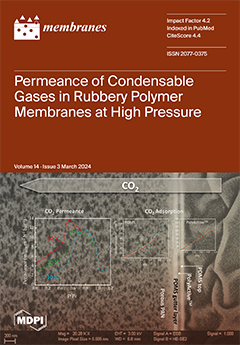Open AccessArticle
In Vivo Validation of a Nanostructured Electrospun Polycaprolactone Membrane Loaded with Gentamicin and Nano-Hydroxyapatite for the Treatment of Periodontitis
by
Patricia Ondine Lucaciu, Călin Cosmin Repciuc, Ioana A. Matei, Nicodim I. Fiț, Sanda Andrei, Raluca Marica, Bianca Nausica Petrescu, Bogdan Crișan, Ovidiu Aghiorghiesei, Ioana Codruța Mirică, Dragoș Apostu, Codruța Saroși, Florin Onișor, Evelyn Vanea, Simina Angela Lăcrimioara Iușan, Giorgiana Corina Mureșan, Ana-Maria Condor, Emilia Oprița and Luciana-Mădălina Gherman
Viewed by 1050
Abstract
The aim of this research was to validate the use of a gentamicin (GEN) and nano-hydroxiapatite (nHAP)-loaded polycaprolactone nanostructured membrane (NM) as an innovative, highly efficient, low-cost treatment for periodontitis. We conducted an in vivo study on Wistar rats, in which we induced
[...] Read more.
The aim of this research was to validate the use of a gentamicin (GEN) and nano-hydroxiapatite (nHAP)-loaded polycaprolactone nanostructured membrane (NM) as an innovative, highly efficient, low-cost treatment for periodontitis. We conducted an in vivo study on Wistar rats, in which we induced periodontitis by placing silk ligatures around the first right and left upper molars. The subjects were divided into three groups; the first group received no periodontal treatment, the second group received open flap debridement, and the third group received open flap debridement, together with the positioning of the GEN and nHAP-loaded nanostructured membrane as a treatment. The extent of periodontal regeneration was assessed by the periodontal pocket depth, bleeding on probing, tooth mobility, dental plaque, microbiological analysis, concentration of MMP-8 in saliva, plasma levels of CRP, and histological analysis. The results showed that using open flap debridement with the NM is more efficient, and it significantly reduces the probing depth, extent of bleeding on probing, dental mobility, bacterial plaque, and pathogenic flora. The concentrations of MMP-8 and CRP decrease. The histological analysis demonstrated that NM leads to bone regeneration. Our study indicates that gentamicin and nano-hydroxyapatite embedded in the fiber of the biodegradable membranes might be a promising therapeutic option for periodontitis treatment.
Full article
►▼
Show Figures






